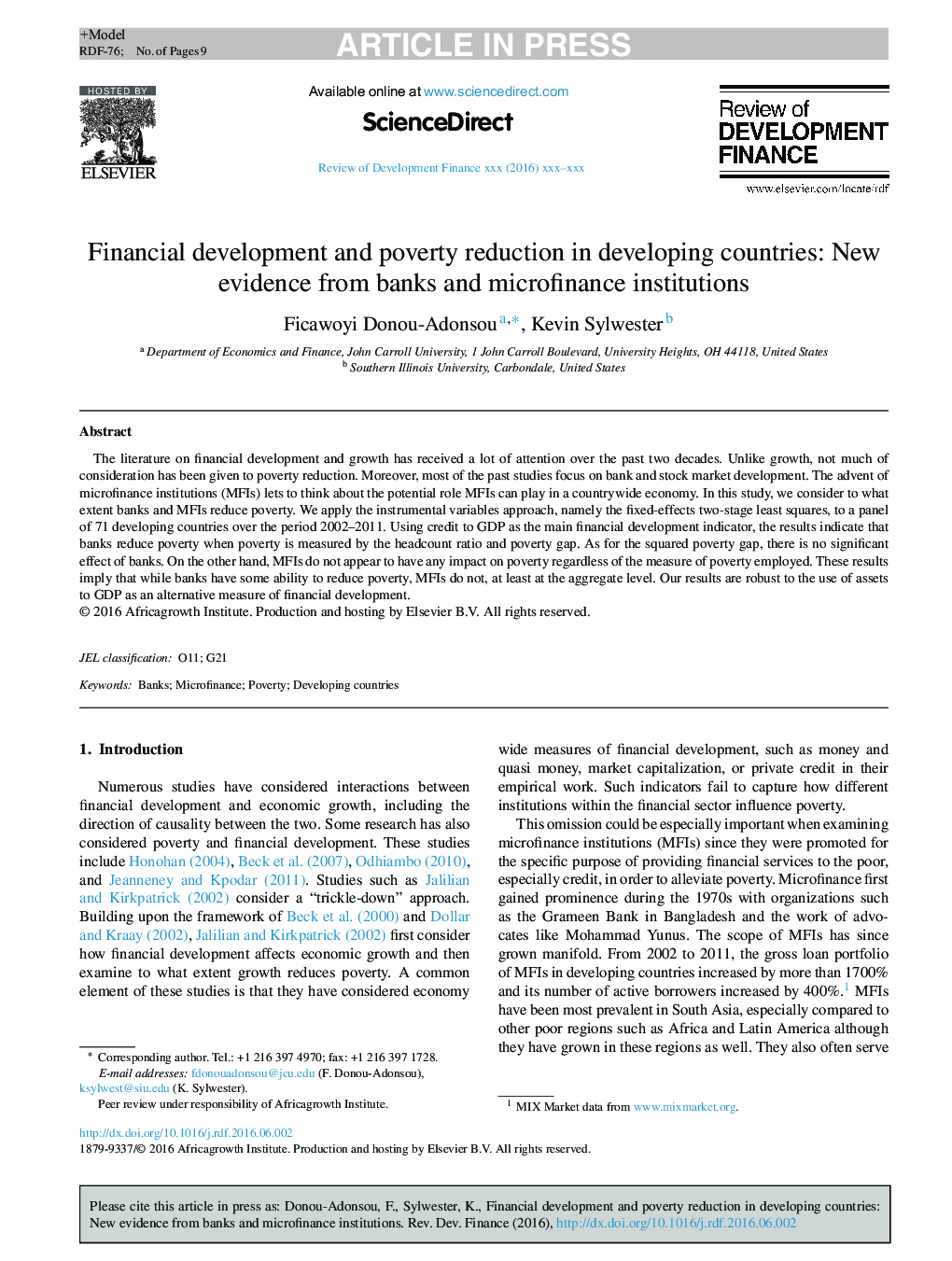| Article ID | Journal | Published Year | Pages | File Type |
|---|---|---|---|---|
| 5104286 | Review of Development Finance | 2016 | 9 Pages |
Abstract
The literature on financial development and growth has received a lot of attention over the past two decades. Unlike growth, not much of consideration has been given to poverty reduction. Moreover, most of the past studies focus on bank and stock market development. The advent of microfinance institutions (MFIs) lets to think about the potential role MFIs can play in a countrywide economy. In this study, we consider to what extent banks and MFIs reduce poverty. We apply the instrumental variables approach, namely the fixed-effects two-stage least squares, to a panel of 71 developing countries over the period 2002-2011. Using credit to GDP as the main financial development indicator, the results indicate that banks reduce poverty when poverty is measured by the headcount ratio and poverty gap. As for the squared poverty gap, there is no significant effect of banks. On the other hand, MFIs do not appear to have any impact on poverty regardless of the measure of poverty employed. These results imply that while banks have some ability to reduce poverty, MFIs do not, at least at the aggregate level. Our results are robust to the use of assets to GDP as an alternative measure of financial development.
Related Topics
Social Sciences and Humanities
Economics, Econometrics and Finance
Economics and Econometrics
Authors
Ficawoyi Donou-Adonsou, Kevin Sylwester,
